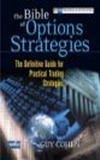Chart Analysis of AMZN - Bearish
 A reader asked me why I considered Amazon.com, Inc.(Public, NASDAQ:AMZN) to be bearish in my earlier watchlist.
A reader asked me why I considered Amazon.com, Inc.(Public, NASDAQ:AMZN) to be bearish in my earlier watchlist.From the chart above, you'll see that AMZN had 2 double top formations. One bigger one, another mini one. Both broke the neckline, which is bearish. It has also been in a downtrend since start of the year. At the point when I was going through my watchlist, I notice AMZN coming up against several resistance: neckline (former support turn resistance) and also near top of the downtrend channel. If you use moving average, you'll see that it is also nearing some key moving averages. But I didn't include them as I want to show that even without looking at moving averages, the pattern is still there.
Stocks in my watchlist do not necessarily pan out or pan out immediately. Even if they do as I expected, I may not take the trade if it does not provide at least 2:1 reward to risk ratio at the point of entry because sometimes the stock may have moved too much and I'm not comfortable with that. I've learned to be more patient and wait for the setup to confirm. I either set an alert in my trading platform or place these stocks which are about to breakout or confirm in a separate smaller watchlist, so I can keep a tighter watch on them.


















0 Comments:
Post a Comment
<< Home